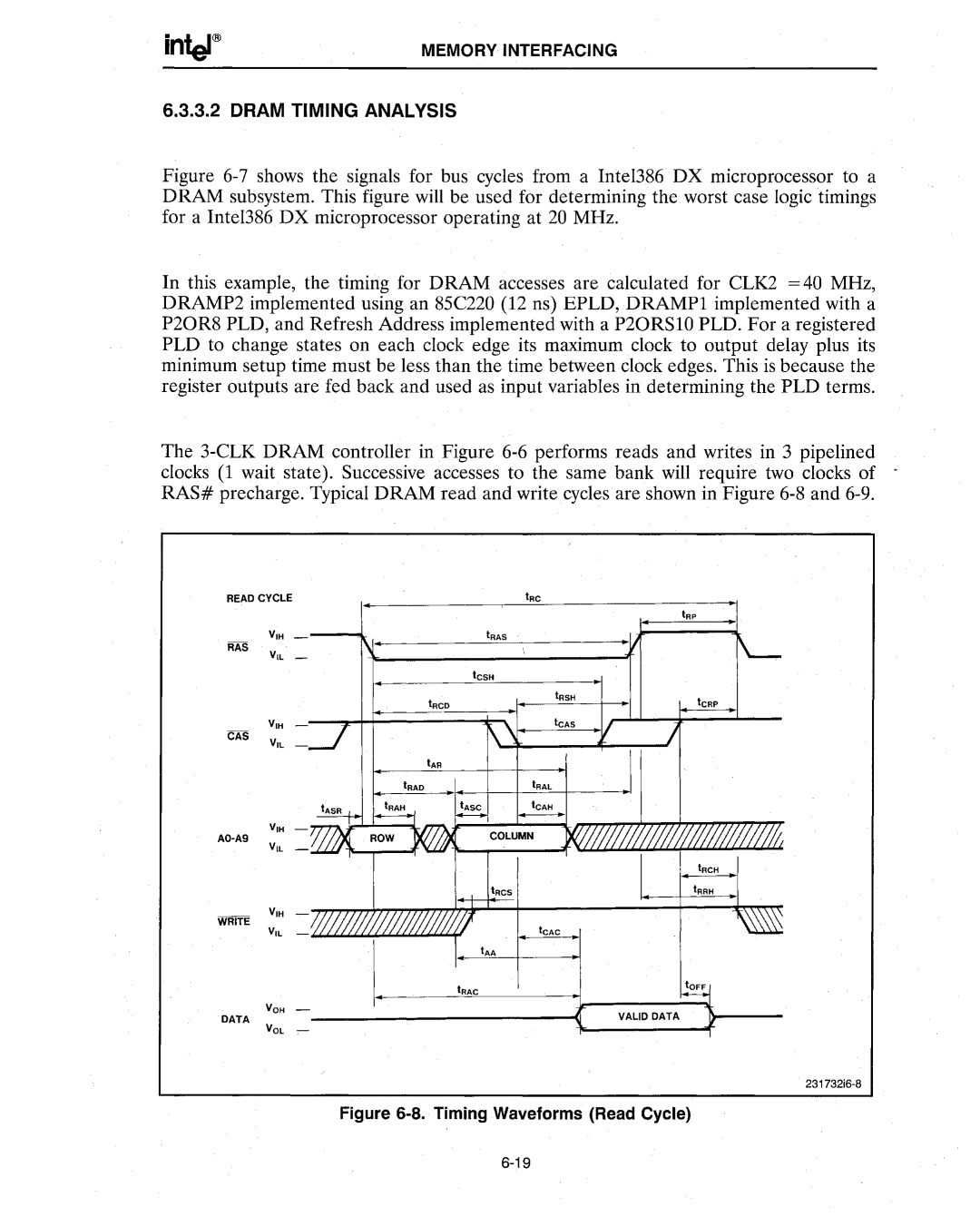
MEMORY INTERFACING
6.3.3.2 DRAM TIMING ANALYSIS
Figure 6-7 shows the signals for bus cycles from a Inte1386 DX microprocessor to a D RAM subsystem. This figure will be used for determining the worst case logic timings for a Inte1386 DX microprocessor operating at 20 MHz.
In this example, the timing for DRAM accesses are calculated for CLK2 = 40 MHz, DRAMP2 implemented using an 85C220 (12 ns) EPLD, DRAMPI implemented with a P20R8 PLD, and Refresh Address implemented with a P20RSlO PLD. For a registered PLD to change states on each clock edge its maximum clock to output delay plus its minimum setup time must be less than the time between clock edges. This is because the register outputs are fed back and used as input variables in determining the PLD terms.
The 3-CLK DRAM controller in Figure 6-6 performs reads and writes in 3 pipelined clocks (1 wait state). Successive accesses to the same bank will require two clocks of RAS# precharge. Typical DRAM read and write cycles are shown in Figure 6-8 and 6-9.
READ CYCLE
lAP
RAS
tcSH
CAS
AO·A9
| ~__~IA~A~C________~________~IO=FF~ |
DATA | VALID DATA |
